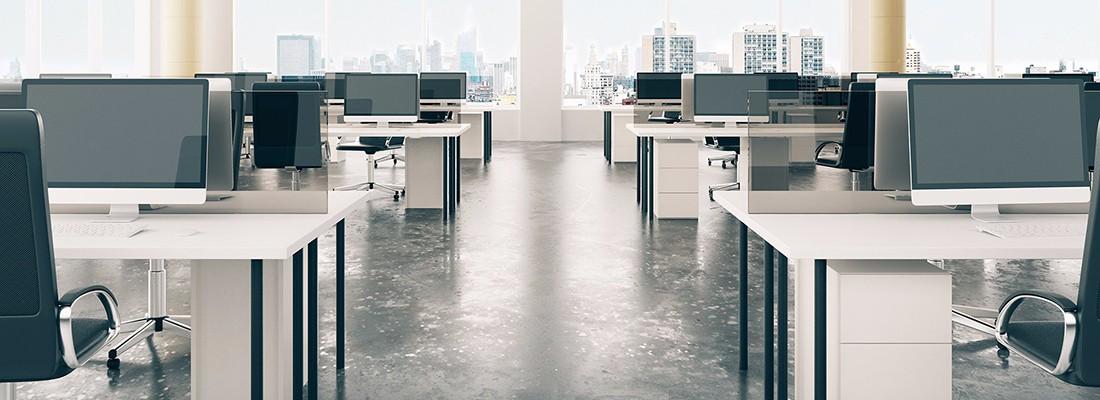Reading time: 3 Minutes
When you look around your office, are you faced with a lot of empty desks? If so, you’re not alone. The average office is left empty or unused for 55% of the time, according to research carried out by Regus. And it’s costing large companies dearly – around £21,000 per desk each year.
But the cost is not only financial, it’s also an obstacle to your company’s agility and employee productivity. The number of desks in your office no longer equates to how productive your workforce is likely to be. A fully fixed space is more likely to be a weight that prevents you from reacting quickly to market demands.
An increasing number of large companies are ditching the traditional, all-fixed office for a more flexible set-up: here’s why.
It’s all about the money
Paying for physical assets like office space that aren’t being used – whether due to a changing employee headcount or a shifting flexible work policy – is a huge financial drain.
In Hong Kong, office space costs £165 per square foot each year, and prices are still climbing. New York sits at £99, Tokyo at £81 and San Francisco at £68. At these hugely high costs, a corporation with 5,000 employees and 75 offices can save around £5.5 million by moving away from a fixed model.
Keeping reactive
Economic and political uncertainty, from Brexit to terrorist incidents to new tiger economies, means large companies are facing various threats, but also opportunities to expand and adapt. Large companies need to be ready to react to the more dynamic, fast-paced market.
One of the most difficult challenges for this rapid change, the ‘known unknown’ of aligning headcount requirements with workspace needs, is now more unknown than ever, given the increase in contractual workers, outsourcing, and off-site tech centres. Added to that is the changing location needs of large companies – to be closer to clients and closer to employees.
This pace of change means that today’s large companies cannot predict their exact floorspace needs in any given location even six months out, let alone five years on (as traditional leasing arrangements require). But most corporate real estate portfolio strategies have not been designed to be reactive to market demands. They are founded instead on traditional, fixed office space that needs long-term commitment and ties up valuable capital, preventing agility.
You’re no longer in charge
Not only are the needs of the company changing, so are the expectations of employees. With a mixture of corporate employees, mobile workers, project teams and contingent workers, the average workforce of a large company has different requirements for interaction, workspace and collaboration.
Author of The Future of Work, Jacob Morgan, reminds us that “organizations can no longer assume that employees need to work there” – they must instead provide inspiring spaces that encourage people to use them. And this doesn’t just mean creating an open-plan office: “organizations investing in [these] plans also have numerous other floor plans that cater to diverse ways of working. It’s not a one-way or nothing approach. It’s about recognizing that employees have multiple preferences for how they want to work and enabling that.”
Telus, the Canadian telecoms provider, has followed that advice and established ‘Work Styles’, which allows 27,000 employees (70% of of its workforce) to work wherever they liked, moving between home, the office and other locations. Employee engagement increased from 54 to 87% in six years – and the company saved over £3 million in the process. And cut their carbon emissions by 8,000 tonnes a year.
Flex vs fixed
Faced with new requirements in terms of costs, agility and productivity, large companies must adapt their real estate strategies. The solution is often not either fully fixed or fully flexible, but a blended portfolio containing both.
By outsourcing flexible space requirements, companies cut down capital expenditures by eliminating the costs of building expenses, furniture and technology, and guarantee more efficient use of their space. Not only that, but they prepare themselves for rapid, agile change and enable a more productive workforce. Time to get rid of those empty desks?


